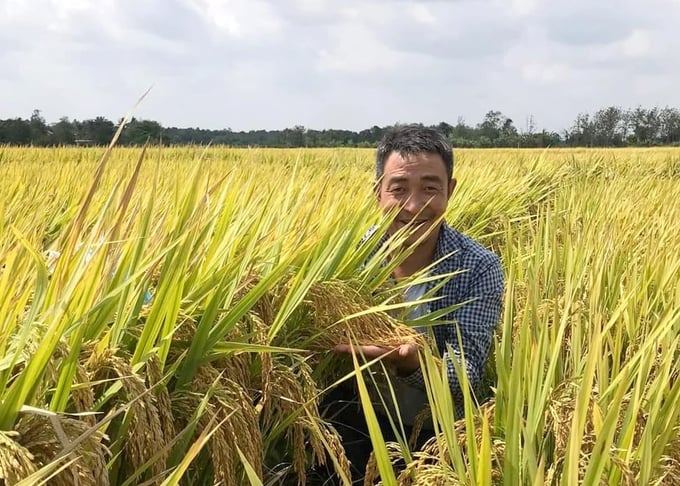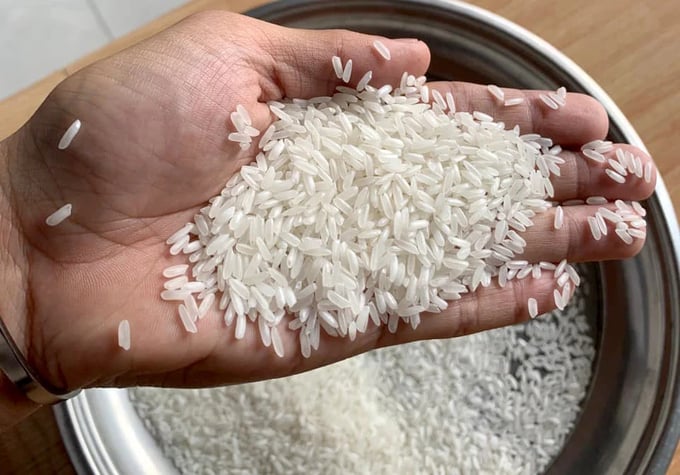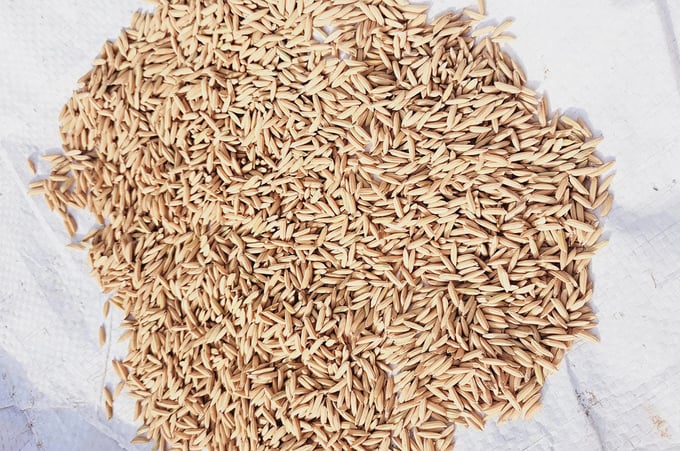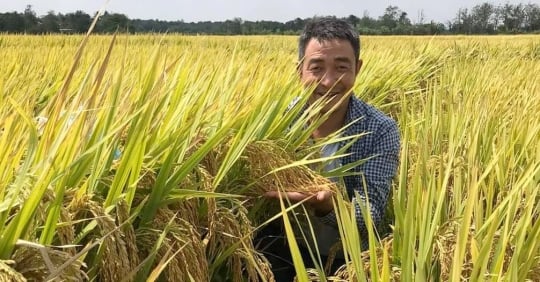(VAN) Vietnamese rice continues to dominate most of the rice imported by the Philippines. There are two types of rice that Filipinos most favour.

A ripe rice field in the Mekong Delta. Photo: Son Trang.
Two Vietnamese rice varieties, DT8 and OM5451, are currently quite popular in the Philippine market. This information comes from the Vietnam Trade Office in the Philippines. Among these, OM5451 is one of the most widely produced rice varieties in the Mekong Delta.
The OM5451 rice variety was created in 2004 as part of the high-quality rice breeding program by the Mekong Delta Rice Research Institute. In early 2011, the Mekong Delta Rice Research Institute and An Giang Plant Protection Joint Stock Company (now Loc Troi Group) signed a contract to transfer the rights to the OM5451 rice variety. Subsequently, Loc Troi started producing this rice variety in the southern provinces. At that time, OM5451 was still in the trial production phase, so the planting area was limited to 1,500 ha.
By the end of 2011, the OM5451 rice variety was officially recognized under Decision No. 711/QĐ-BNN-TT dated December 7, 2011, by the Ministry of Agriculture and Rural Development for the southern provinces and cities. Since then, Loc Troi has expanded the planting area and supplied OM5451 seeds to farmers in the southern provinces. OM5451 rice quickly met the preferences of domestic consumers and entered the export market. As a result, the planting area for this rice variety expanded rapidly. According to the Department of Crop Production, in 2023, the planting area for OM5451 in the Mekong Delta was over 645,000 ha.

OM5451 rice. Photo: Son Trang.
With high productivity and easy consumption due to its good quality, meeting export standards, and having a fairly good salt tolerance, suitable for all three rice crops per year, the OM5451 rice variety is preferred by many farmers in the Mekong Delta.
Mr. Nguyen Thanh Tra, a farmer in Thanh Hiep hamlet, Thanh Phu commune, Ben Luc district, Long An province, shared that the OM5451 rice variety has a short growth period, only from 90 to 95 days, thereby reducing production time and the risk of crop loss due to weather conditions. This variety is also very suitable for cultivation in conditions of decreasing water sources, drought, and increasing saltwater intrusion. In the summer-autumn crop of 2024, due to the prolonged heatwave, many farmers in Thanh Hiep hamlet, Thanh Phu commune, and in general, have chosen rice varieties with good tolerance, including the OM5451 variety.
DT8 is a high-quality rice variety, researched and selected by the Vietnam Seed Group (Vinaseed) and officially recognized by the Ministry of Agriculture and Rural Development in 2017 for the coastal areas of South Central, Southeast, Central Highlands, and the Mekong Delta. Since then, the DT8 rice variety has been developed in many localities.
DT8 rice has been participating in the export market for many years, including the Philippines market. Mr Do Ha Nam, Vice Chairman of the Vietnam Food Association (VFA), said that Filipinos highly favour DT8 rice because of its good quality and reasonable price.

DT8 rice grains. Photo: Son Trang.
Not only these two types of rice but Vietnamese rice, in general, is highly appreciated by Filipino consumers for its delicious taste and reasonable price. Currently, Vietnamese rice is dominating the rice market in the Metro Manila area and the southern provinces of the Philippines.
The preference for Vietnamese rice is evident through the quantity of rice imported into the Philippines. Information from the Bureau of Plant Industry under the Philippine Department of Agriculture shows that in 2023, the Philippines imported 3.57 million tons of rice, of which Vietnamese rice accounted for 2.97 million tons, or 83%.
From January 1 to May 23, 2024, the total rice imports of the Philippines reached 1.97 million tons, an increase of 20.3% compared to the first 5 months of 2023. Of this, Vietnamese rice imports into the Philippines reached 1.44 million tons, accounting for 72.9% of the total rice imports into the country. Thailand ranked second with 300 thousand tons, followed by Pakistan with 145 thousand tons, and Myanmar with 65 thousand tons. The remaining imports were from India, China, Japan, Cambodia, Italy, and Spain.
Despite efforts to promote domestic rice production, the Philippines still needs to import millions of tons of rice this year, with an estimated volume of about 4 million tons. If achieved, the rice imports of the Philippines in 2024 will surpass the record of rice imports in 2022, which was 3.82 million tons. With such a large import demand, Filipino importers will certainly continue to target the Vietnamese market, which has been the largest source of supply in recent years.
Agriculture News | Agri Products Price



